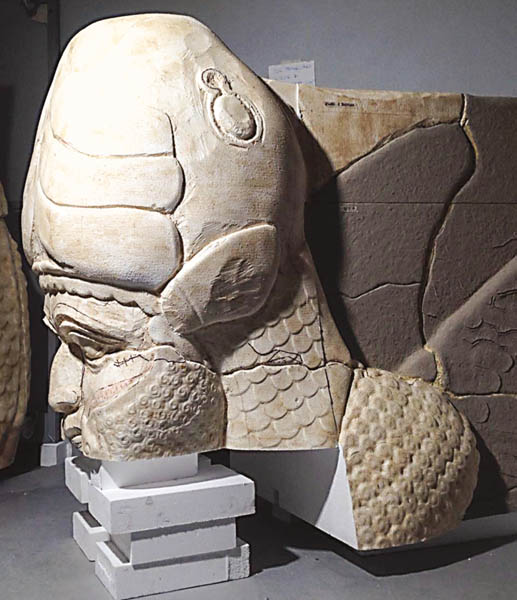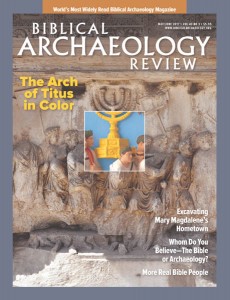
An exhibit at the Roman Colosseum that ended last December recreated some of the recently damaged or destroyed monuments in the Middle East. Curated by Paolo Matthiae of the Sapienza University of Rome and Italian politician Francesco Rutelli, the exhibit, Rising from the Ashes, featured full-scale recreations of three prominent monuments: the 24th-century B.C.E. Great Archive Room from Ebla (in modern Syria) with its cuneiform tablets inscribed in a West Semitic language akin to Hebrew, a ninth-century B.C.E. colossal sculpture of a human-headed, winged bull deity from the Northwest Palace in the Assyrian capital city of Nimrud (Iraq) and the richly carved ceiling from the sanctuary of the first-century C.E. Temple of Bel in Palmyra (Syria).
These 3D reproductions were possible thanks to the combination of prior documentation and modern technology: Precise archaeological data served as a basis for digital models of the monuments, which were then materialized into styrofoam by computer-controlled sculpting machines or reproduced on 3D printers. To convey the authentic colors and volume of the artworks, the Nimrud bull was then coated with a mix of pulverized minerals and resins, while the Ebla archive room was converted to a fiberglass copy. In addition to the three reproductions, two ancient marble busts—retrieved from the vandalized museum in Palmyra—were put on display before being restored.
Already a library member? Log in here.
Institution user? Log in with your IP address.

